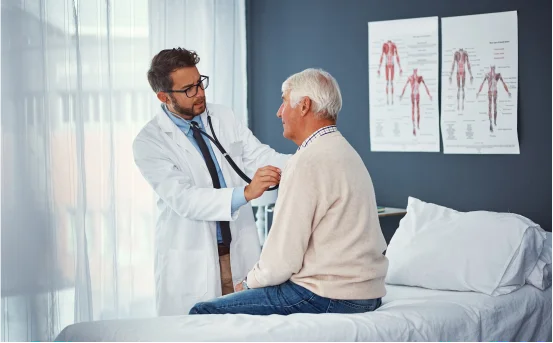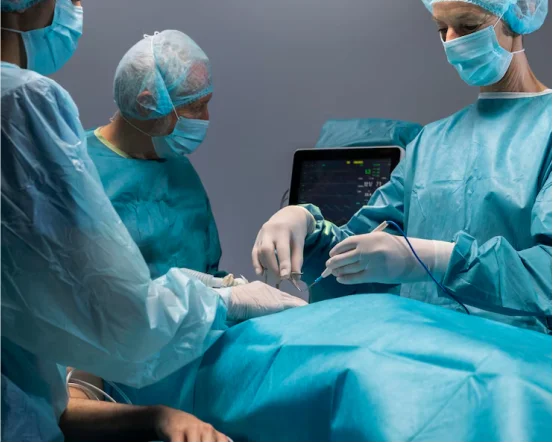Cardioversion therapy is a medical procedure used to restore a normal heart rhythm in people with abnormal heartbeats or arrhythmias like atrial fibrillation or atrial flutter. It is typically performed when medications have failed to correct the heart’s rhythm or when a rapid heartbeat needs urgent correction. While cardioversion is a safe and effective treatment, understanding the symptoms associated with cardioversion therapy before and after the procedure can help patients manage expectations and recover more smoothly.
Irregular heart rhythms commonly known as arrhythmias can significantly impact your quality of life, causing fatigue, dizziness, chest discomfort, and even increasing the risk of stroke or heart failure. Among the various types of arrhythmias, atrial fibrillation (AFib) is the most prevalent, especially in older adults. If you’re living with an arrhythmia that isn’t responding well to medication, your doctor may recommend a treatment known as cardioversion therapy.
What Is Cardioversion Therapy?
Cardioversion is a procedure that restores a normal heart rhythm in people with certain types of irregular heartbeats (arrhythmias), most commonly atrial fibrillation (AFib). The heart may beat too fast, too slow, or erratically, reducing its ability to pump blood efficiently.
Cardioversion is typically performed in two ways :-
-
Electrical Cardioversion :- A controlled, low-energy electrical shock is delivered to the heart using paddles or patches placed on the chest. This is done under sedation.
-
Pharmacological Cardioversion :- Medications (antiarrhythmics) are used to correct the heartbeat without electrical shock.
Symptoms of Cardioversion Therapy
Before undergoing cardioversion, many patients experience symptoms related to the arrhythmia itself. These may include:
- Palpitations :- A fluttering, racing, or irregular heartbeat is the most noticeable symptom. Patients may feel as though their heart is “skipping beats” or beating too fast.
- Shortness of Breath :- Arrhythmias can reduce oxygen-rich blood supply to the body, causing breathlessness even during mild activity or at rest.
- Fatigue and Weakness :- Because the heart isn’t pumping effectively, you may feel constantly tired or have low energy levels.
- Chest Discomfort :- Some patients report mild chest pain or pressure due to the irregular rhythm.
- Dizziness or Lightheadedness :- Insufficient blood flow to the brain can lead to feelings of faintness or imbalance.
These symptoms typically improve once normal sinus rhythm is restored through cardioversion.
What Happens During Cardioversion?
-
Preparation :- Patients are usually asked to fast for 6-8 hours. An ECG and blood tests may be conducted beforehand.
-
Anesthesia :- For electrical cardioversion, sedation is given to ensure comfort. The patient won’t feel the shock.
-
The Procedure :- A brief electric shock is delivered to the heart. The process takes only a few minutes.
-
Post-procedure Monitoring :- Vital signs and heart rhythm are monitored until the patient is fully awake and stable.
Symptoms After Cardioversion Therapy
While most patients tolerate the procedure well, some temporary symptoms may occur after cardioversion. These include :-
- Skin Redness or Discomfort :- Patients who undergo electrical cardioversion may notice redness or mild burns on the skin where the pads were placed. This usually fades within a few days.
- Muscle Soreness :- Some people experience sore chest muscles after the shock. This soreness is typically mild and goes away within 24-48 hours.
- Fatigue :- It’s common to feel tired after the procedure, especially from the sedative used during electrical cardioversion.
- Mild Confusion or Grogginess :- Since sedation is used, patients might feel drowsy or disoriented for a few hours post-procedure. This is temporary.
- Palpitations or Irregular Beats :- In some cases, irregular heartbeats may temporarily return. Usually, this settles down as the heart stabilizes.
- Bruising at IV Site :- The insertion point for IV sedation or medication may show slight bruising or swelling.
Rare but Serious Symptoms After Cardioversion
Though rare, certain symptoms following cardioversion require immediate medical attention :-
Chest Pain :- Severe or persistent chest pain could signal a heart issue such as myocardial infarction (heart attack).
Shortness of Breath or Swelling :- These may indicate fluid buildup or heart failure, especially if they worsen after the procedure.
Signs of Stroke
Since cardioversion can dislodge blood clots in the heart, there is a small risk of stroke. Symptoms include :-
-
Sudden numbness or weakness on one side of the body
-
Difficulty speaking or understanding speech
-
Vision changes
-
Severe headache
Allergic Reaction :- Unusual swelling, itching, rash, or difficulty breathing may be signs of a reaction to the sedative or medication.
How to Manage Symptoms After Cardioversion
Most side effects of cardioversion are mild and can be managed at home with simple care tips :-
-
Rest :- Give your body time to recover from sedation and the procedure.
-
Stay Hydrated :- Drink fluids to help flush medications and support circulation.
-
Monitor Your Heart Rate :- Your doctor may advise using a home pulse monitor to check your rhythm.
-
Follow Medication Instructions :- Continue blood thinners or antiarrhythmic drugs as prescribed to prevent clot formation or recurrence of AFib.
-
Attend Follow-Ups :- Regular visits to your cardiologist are essential to ensure the heart maintains normal rhythm.
Long-Term Outlook After Cardioversion
The success of cardioversion depends on various factors such as :-
-
Duration of arrhythmia
-
Underlying heart disease
-
Use of blood thinners
-
Overall health and age
Some patients may require repeat cardioversion or transition to other treatments such as catheter ablation or implantable devices.
Conclusion
Understanding the symptoms before and after cardioversion therapy helps you prepare mentally and physically for the procedure. While most side effects are temporary and manageable, staying vigilant for serious symptoms can help prevent complications and ensure a smooth recovery.























